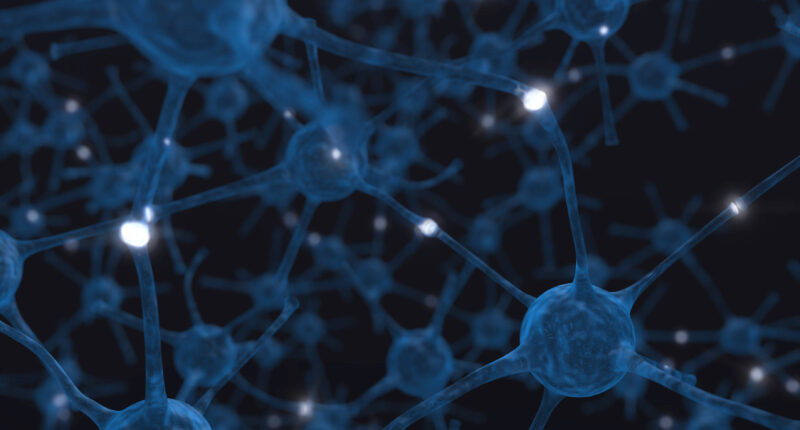Engineers have created artificial neurons using bacteria-grown protein nanowires that operate at the same voltage as biological neurons, enabling direct communication with living cells and dramatically improving energy efficiency.
Research published in Nature Communications demonstrated artificial neurons whose electrical activity closely matches natural brain cells. The University of Massachusetts Amherst team built the neurons using protein nanowires made from electricity-producing bacteria Geobacter sulfurreducens.
The artificial neurons register only 0.1 volts, which is approximately the same as the threshold of neurons in human bodies. Previous versions of artificial neurons used 10 times more voltage and 100 times more power, making them far less efficient and unable to connect directly with living neurons, which are sensitive to stronger electrical signals.
“Our brain processes an enormous amount of data,” said Shuai Fu, a graduate student in electrical and computer engineering at UMass Amherst and lead author of the study. “But its power usage is very, very low, especially compared to the amount of electricity it takes to run a Large Language Model, like ChatGPT.”
The human body operates with electrical efficiency more than 100 times greater than typical computer circuits. The brain contains billions of neurons that send and receive electrical signals throughout the body. Performing a task such as writing a story uses only about 20 watts of power in the human brain, while a large language model can require more than a megawatt to accomplish the same task.
“We currently have all kinds of wearable electronic sensing systems,” said Jun Yao, associate professor of electrical and computer engineering at UMass Amherst and the paper’s senior author. “But they are comparatively clunky and inefficient. Every time they sense a signal from our body, they have to electrically amplify it so that a computer can analyze it. That intermediate step of amplification increases both power consumption and the circuit’s complexity, but sensors built with our low-voltage neurons could do without any amplification at all.”
Applications for the new neurons range from redesigning computers along bio-inspired principles to electronic devices that could communicate directly with human bodies. The breakthrough could eliminate the need for power-hungry amplifiers in wearable electronics.
The team previously used the bacteria’s protein nanowires to design other efficient devices, including a biofilm powered by sweat to power personal electronics, an electronic nose to detect disease, and a device to harvest electricity from thin air.











